Customer insight is based on an understanding that not all people are the same.
Hull is growing increasingly diverse. Our residents live in different neighbourhoods and communities; each with their own unique defining characteristics.
People across the city not only look different from one another (e.g. age, ethnicity, housing, income etc) but they have differing attitudes and lifestyles. They use different types of services, have different needs and expectations from the local authority and prefer different communication channels and messaging styles.
In a climate of reduced public funding, residents still have increasing expectations for high quality public services tailored to their individual needs. This means a blanket ‘one size’ approach no longer fits all.
What is Customer Segmentation?
Customer segmentation is simply the process of sub dividing our residents into distinct groups based on:
- who they are (socio-demographics)
- what they do (behaviours)
- how they think and feel (attitudes)
The aim is to identify and understand the differences between these groups. This enables us to
- better create, tailor and target services
- offer increased efficiency
- provide better value for money
- improve life outcomes
What is the Hull Customer Segmentation Model?
Drawing on a range of national and local datasets, the Hull segmentation model links socio-demographic information with real local attitudinal and transactional data.
It provides a detailed and accurate understanding of our resident’s and their distribution around the city.
The model provides Hull City Council and its partners with a strategic management tool which can support and enhance public services in a range of ways. It can help us to:
- Understand who uses public services, to what extent, and in what combinations – allowing us to manage and anticipate customer need both now and in the future
- Allocate resources more efficiently by targeting services specifically at the people who either need or want them
- Increase public satisfaction through improved service design – providing services based on an understanding of how customers prefer to access them
- Create personalised marketing that increases service take up or which can nudge or trigger changes in behaviour
- Realise greater value from research and consultation – identifying further differences and/or similarities in the behaviours and attitudes of different population sub groups
The benefits to our residents include:
- More appropriate, efficient services
- Increased access and awareness to services
- Efficient and targeted communication which promotes the most relevant services, benefits and offerings targeted to the residents likely needs
- A coordinated citywide ‘resident focused’ approach that listens to, and responds to, the needs of the local population
- Greater levels of satisfaction – residents have access to the services they want, in the ways and places that they want them
What do Hull’s Customer Segments Look Like?
Hull’s customer segmentation model includes 12 key customer segments.
These customer segments are primarily based on 2021 Census data; the only comprehensive source of date that is available both for the entire population and at low geographies.
However, this data has been supplemented with local transactional and attitudinal to create a rich picture of the residents in each segment; who they are (socio demographics), what they do (behaviours) and how they think and feel (attitudes).
The table below give’s a high-level overview of Hull’s 12 customer segments.
The information in this table represents just a small amount of the knowledge / insight about each segment; our understanding of which is always growing to as we gain access to more local datasets.
For more detailed information about the segments, or for more information on a specific subject, please contact insight@hullcc.gov.uk



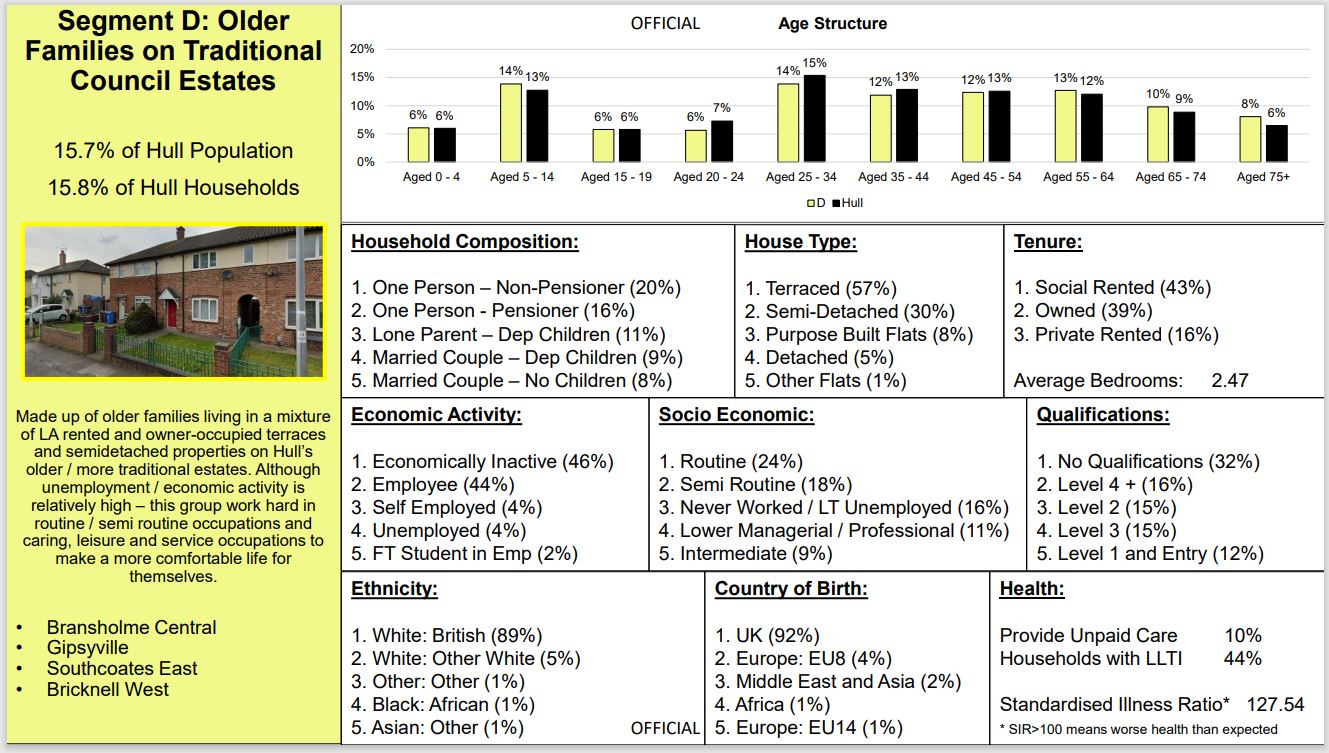
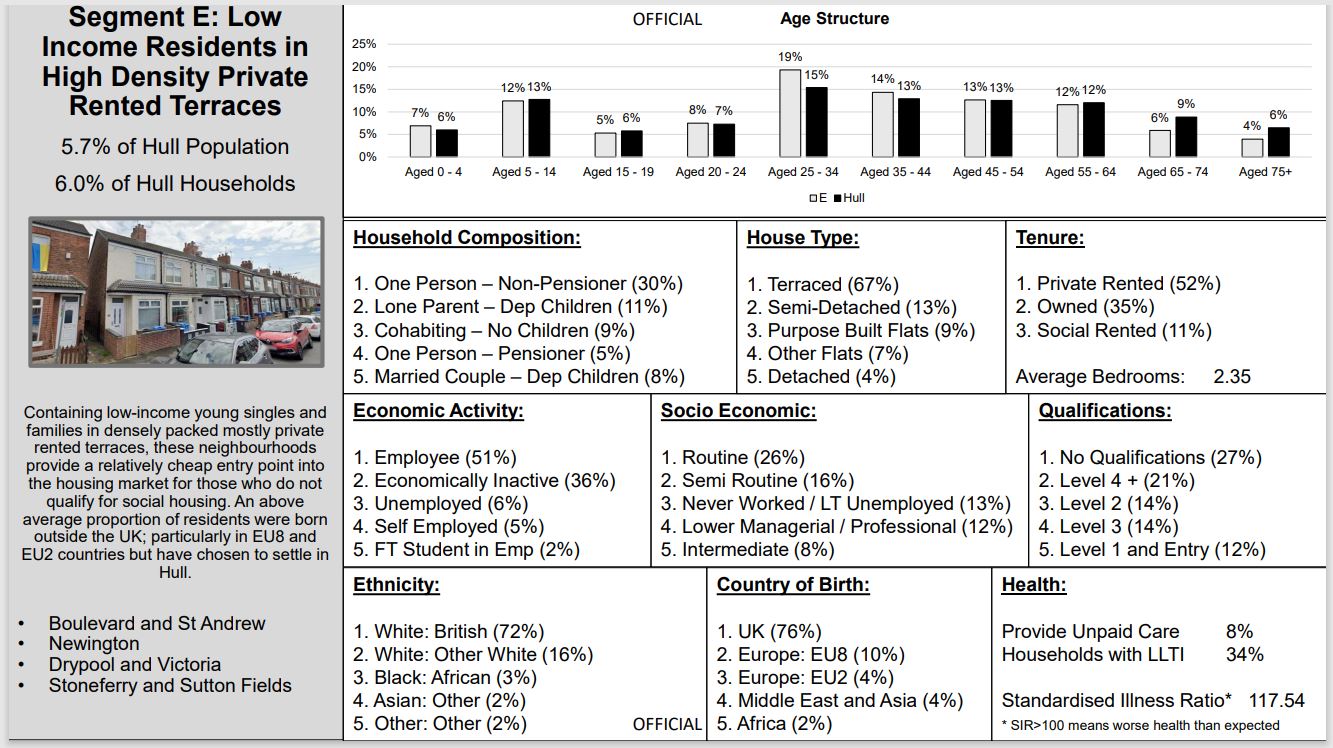
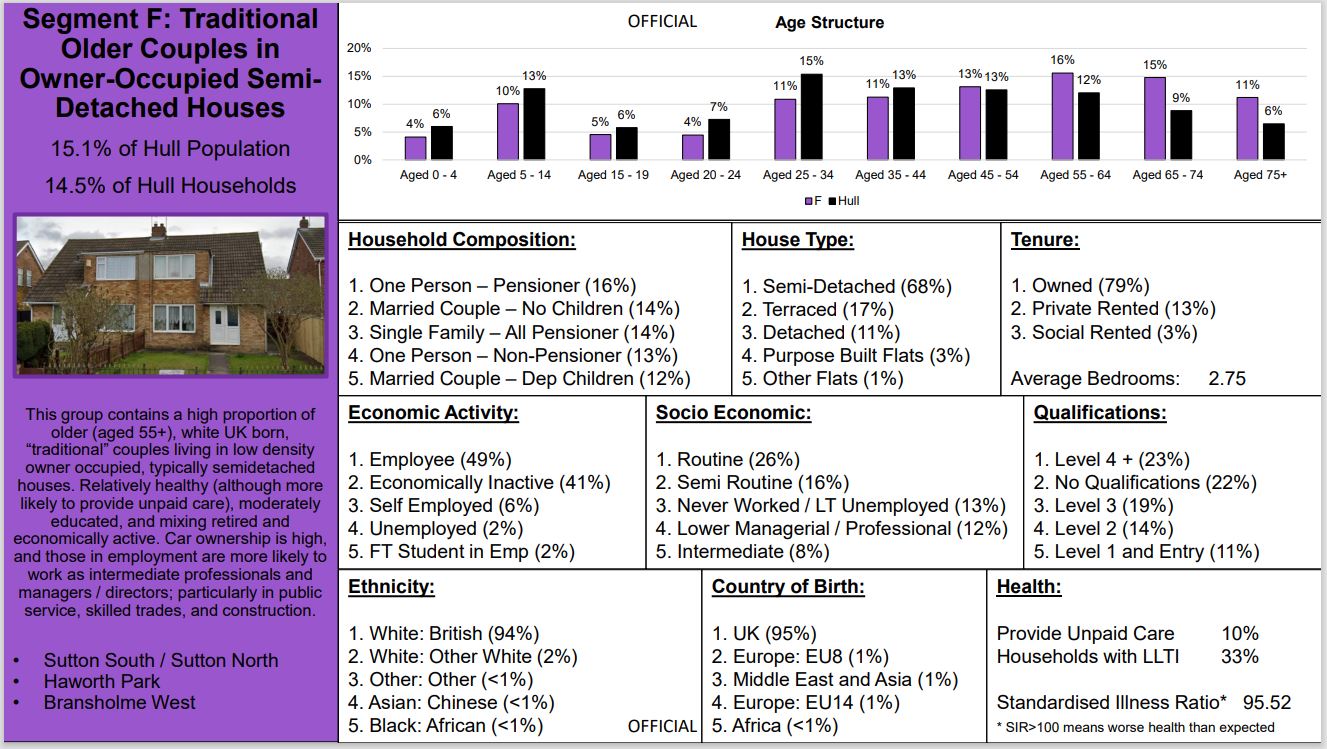
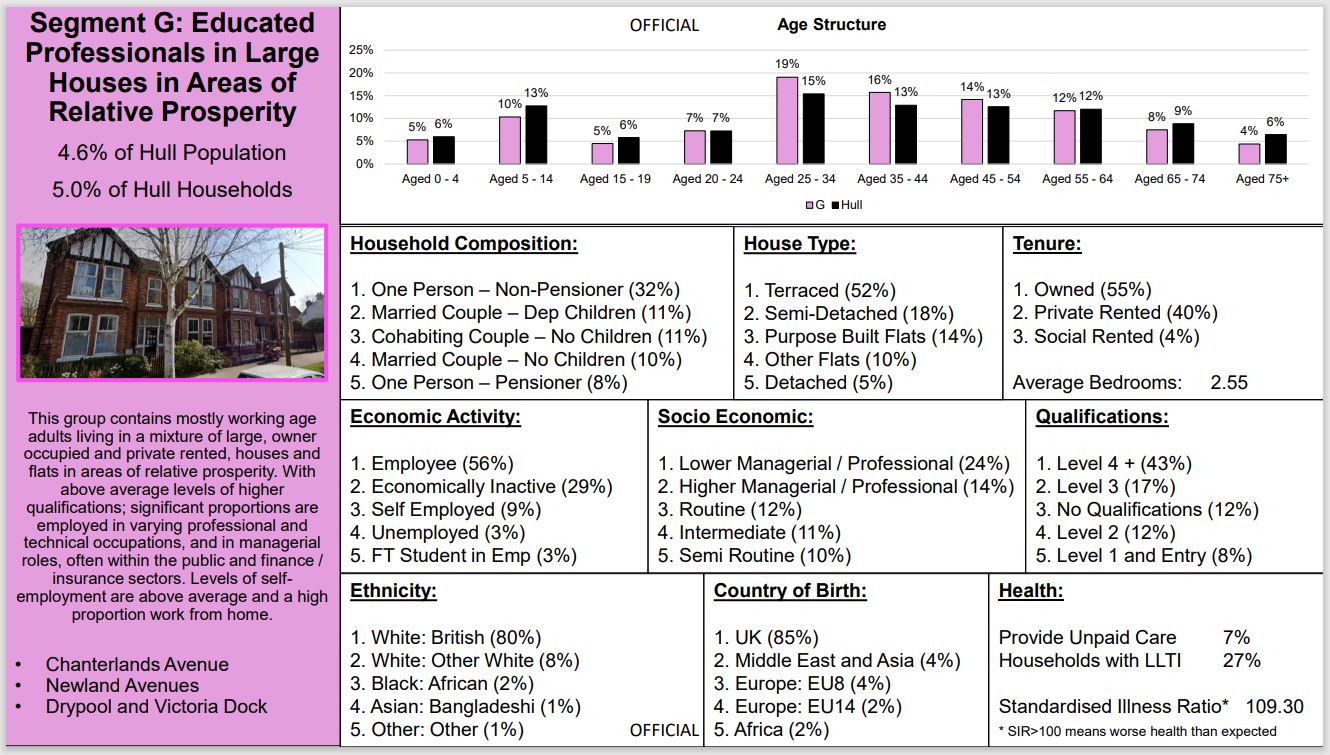
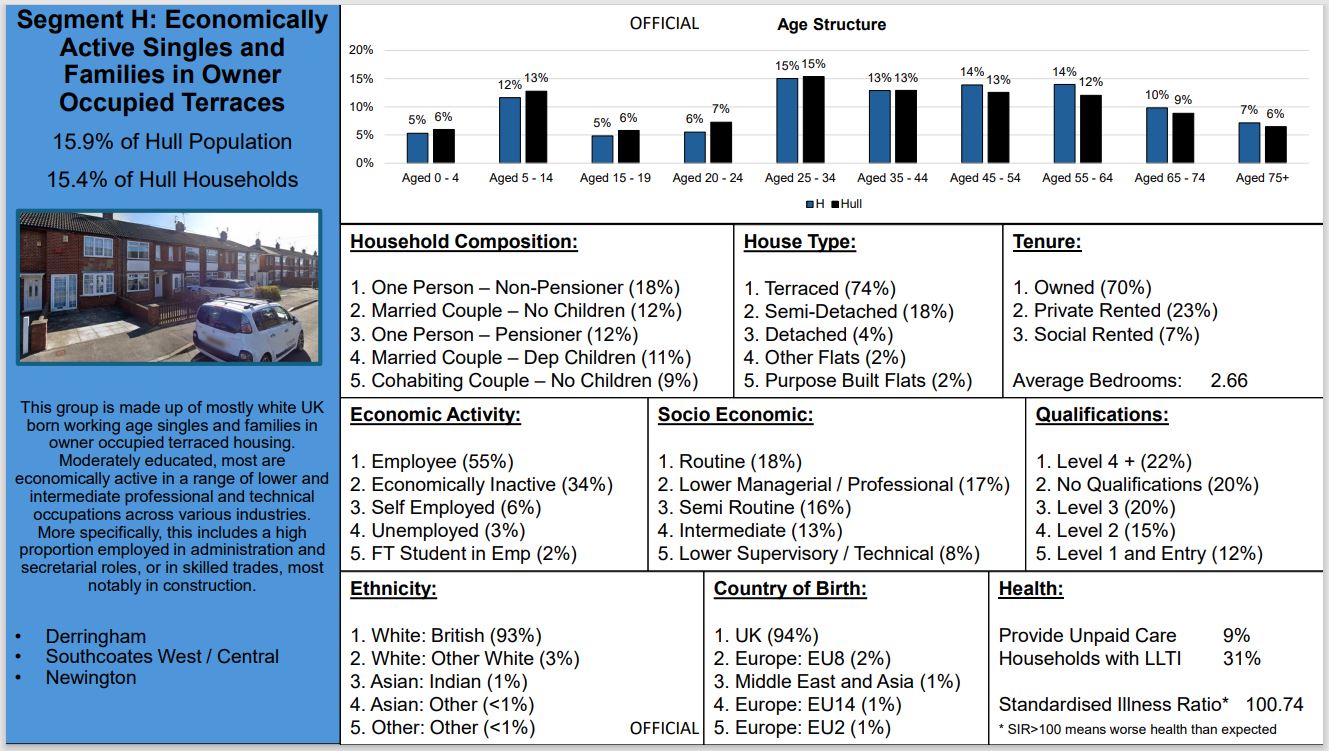
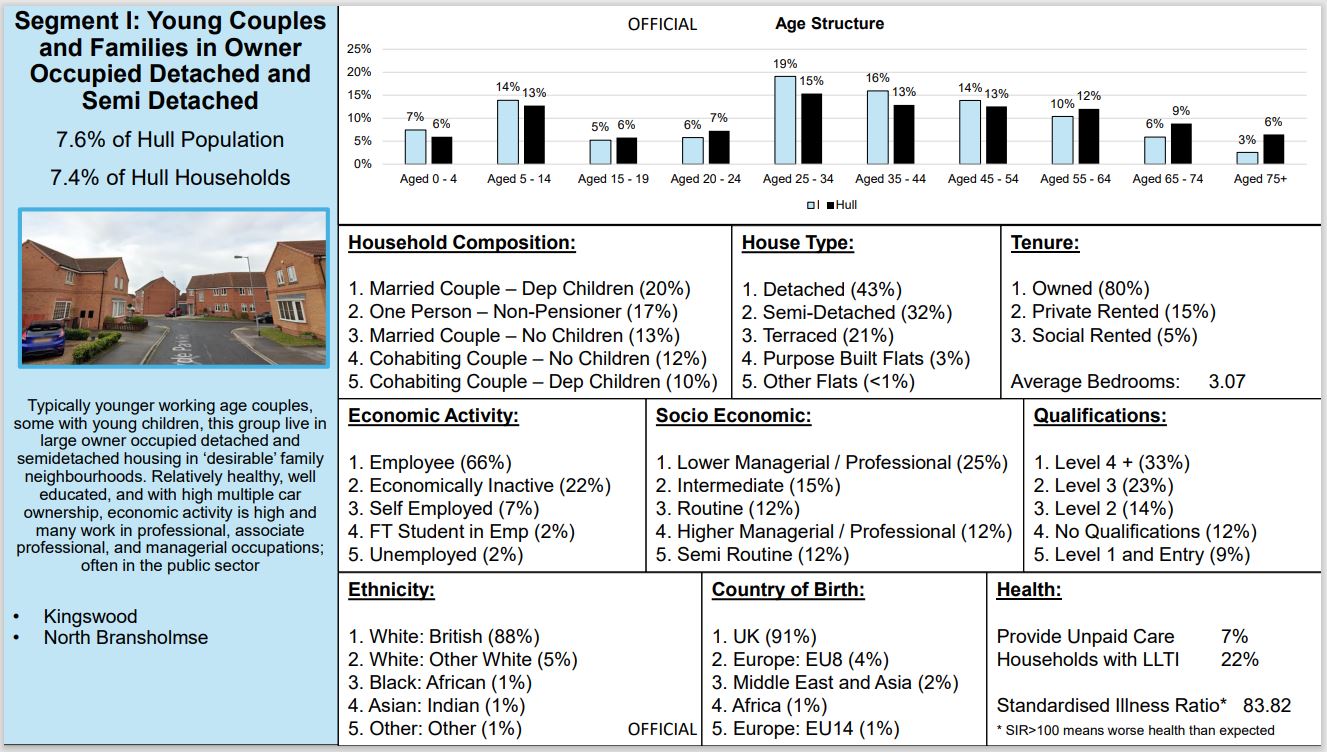
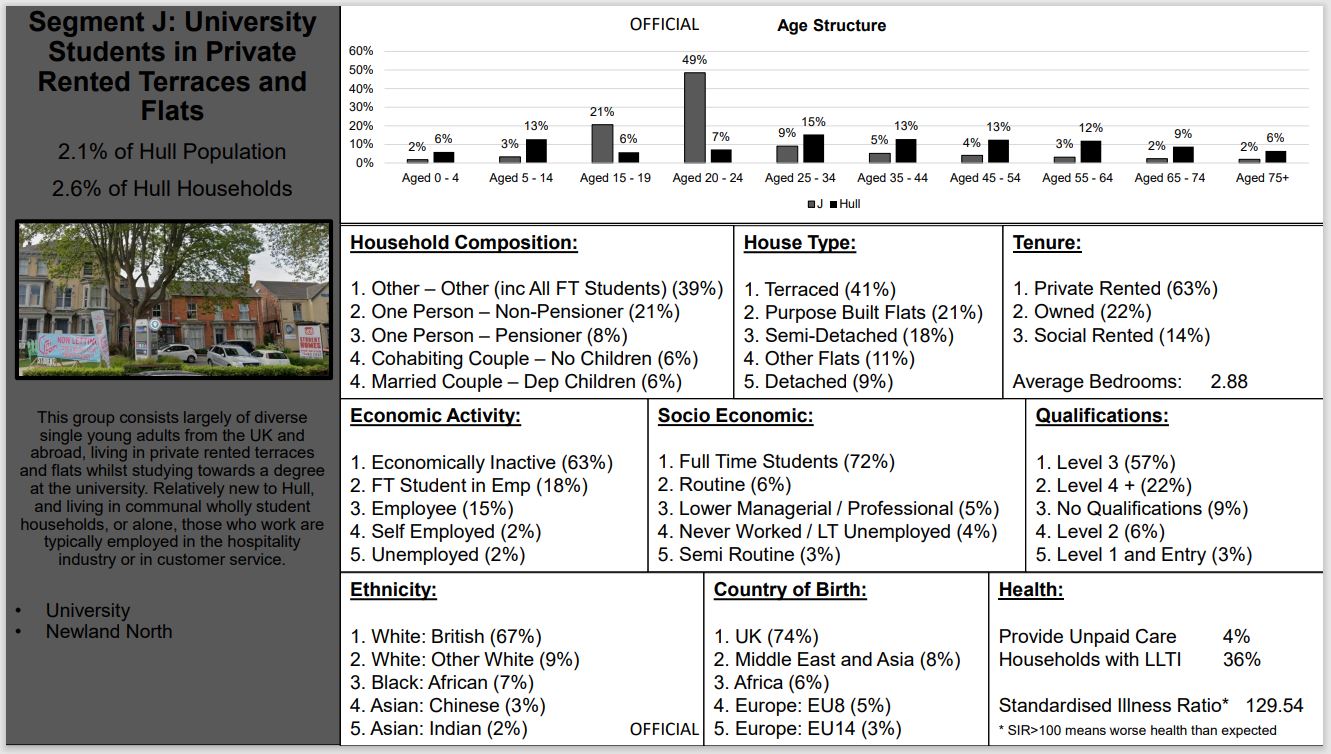
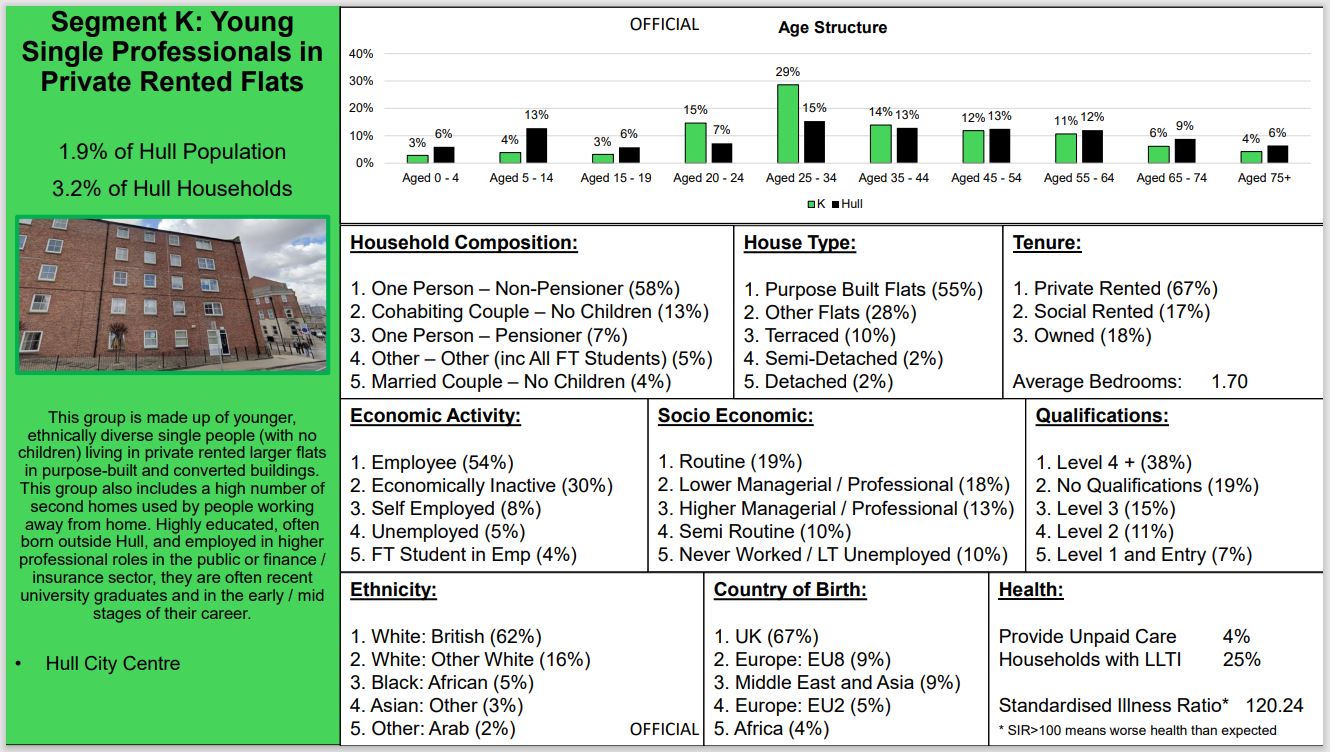
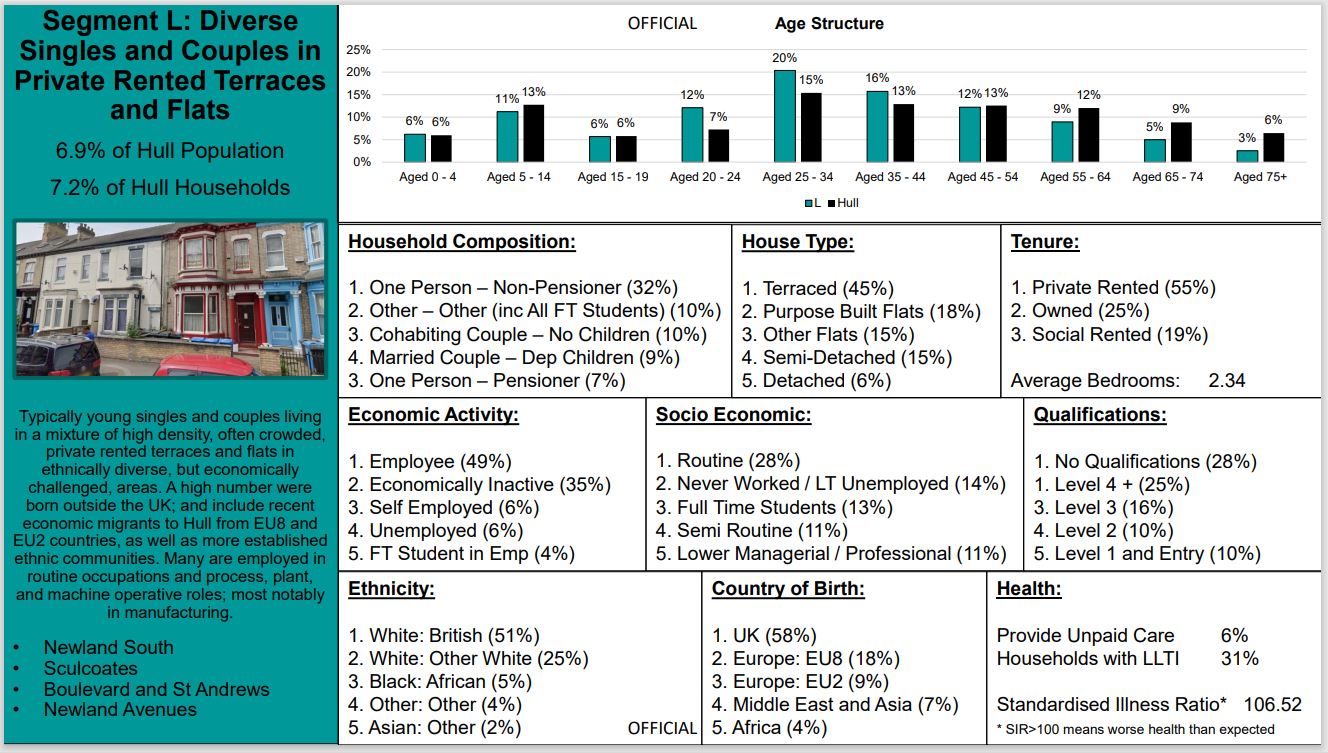
Download a copy of these segment descriptions
Any geographically coded datasets with a full postcode can be segmented and added to our understanding of Hull’s 12 customer segments. Therefore if you have your own data that you would like to see segmented, please contact insight@hullcc.gov.uk
How are Hull’s Customer Segments Distributed Across the City?
The below map shows the geographical distribution of Hull’s 12 customer segments.
Areas in the below map which show cross hatching have a significantly low population density. This means they contain a lower-than-average number of residents and typically cover areas such as parks, green space, or industrial / commercial land.

Hull’s customer segmentation model is based at Output Area (OA) geography.
Output Areas (OAs) are the lowest level of geographical area for census statistics and are typically made up of between 40 and 250 households.
Note: The Hull customer segmentation model is not household based (due to the lack of household level data). Each whole Output Area is assigned to a customer segment based on the segment it most statistically resembles. This means that not all households in an Output Area will necessarily fit the segment description, but the majority will.
What are the Benefits of Hull’s Customer Segmentation Model?
- Prioritising Resources: In economically difficult times, segmentation provides the tools with which resources can be effectively targeted at those customers who want or need them the most. It can help us to make financial savings without affecting the quality of service received by the customer and helps us to prioritise services around customer demand – ensuring that every customer still has access to the services they require when they need them.
Example: Where should we continue to provide expensive-to-run cash handling services? It is expensive to operate this service in every Customer Service Centre. Segmentation can help us to identify whether there are specific segments for which this is a crucial service, the potential for shifting them to other payment methods and ultimately the locations where we should and should not continue to offer this service.
- Intelligence Led Decision Making: Effective decision making should be based on a thorough understanding of the residents and the communities those decisions will affect, both now and in the future. Segmentation provides this intelligence – helping to support decision making and the development of strategic and operational policy
Example: How do we decide when our libraries should open? Segmentation can help us to understand not just who is using each library, but also something about their likely lifestyle. It might be better, for example, closing a poorly used library in an area of high economic activity during the day but opening it for a couple of hours in an evening instead when people are home from work.
- Income Generation: Segmentation provides us with a rich picture of our resident’s financial characteristics including their propensity and ability to pay. The segments can therefore help us to identify opportunities and develop strategies to increase recoveries, improve payments or generate additional revenues.
- Communication and Marketing: By understanding our residents and their channel and messaging preferences we can create personalised communication and marketing that increases service take up or can nudge or trigger changes in behaviour.
Example: How do we increase audiences at our theatres? Segmentation allows us to identify which groups have the highest propensity to visit our theatres and also the types of show each group prefers to see. This can help us to create popular and accessible programming and should inform pricing policy e.g. cheap family tickets aimed at low-income families, gold membership aimed at highly engaged affluent couples etc. Targeted marketing strategies, taking into consideration preferred communication channels and highlighting relevant shows or special offers, should then be created around each segment to increase engagement.
- Citywide Resident Focussed Approach: There is an increasing trend across the public sector towards resident focused services. To achieve this, Hull City Council and its partners need to be supported by a wealth of information about the city’s residents. The segmentation can help develop strategies for transformational service delivery by providing a detailed but accessible understanding of how residents want to access services and engage with us.
Example: How do we help people who are struggling financially? Information from the People’s Panel allowed us to identify those groups which include a high number of people who are in debt and/or struggling financially. The segmentation showed that these groups prefer to access financial support themselves rather than have to come into council offices or Hull Advice. Whilst home broadband is low in these groups, making a shift to online services difficult, many are high mobile phone users. Hull People’s Premium was therefore developed as a text message service aimed at these groups – offering money saving ideas and details on products to help make money go further or reduce household expenditure. Over 2,000 residents signed up for the service.
How Can the Segments Help Me?

If you would like more information on the customer segmentation model, including:
- Information on how it was created / updated
- Detailed descriptions of the segments and their characteristics
- A breakdown of the population / households in a specific area by segment
- Segments with a specific characteristic or propensity to use a specific service etc
- Help to collect data to add to the segment descriptions
- Assistance segmenting your own existing data
Please Contact:
The Insight Team
Hull City Council
